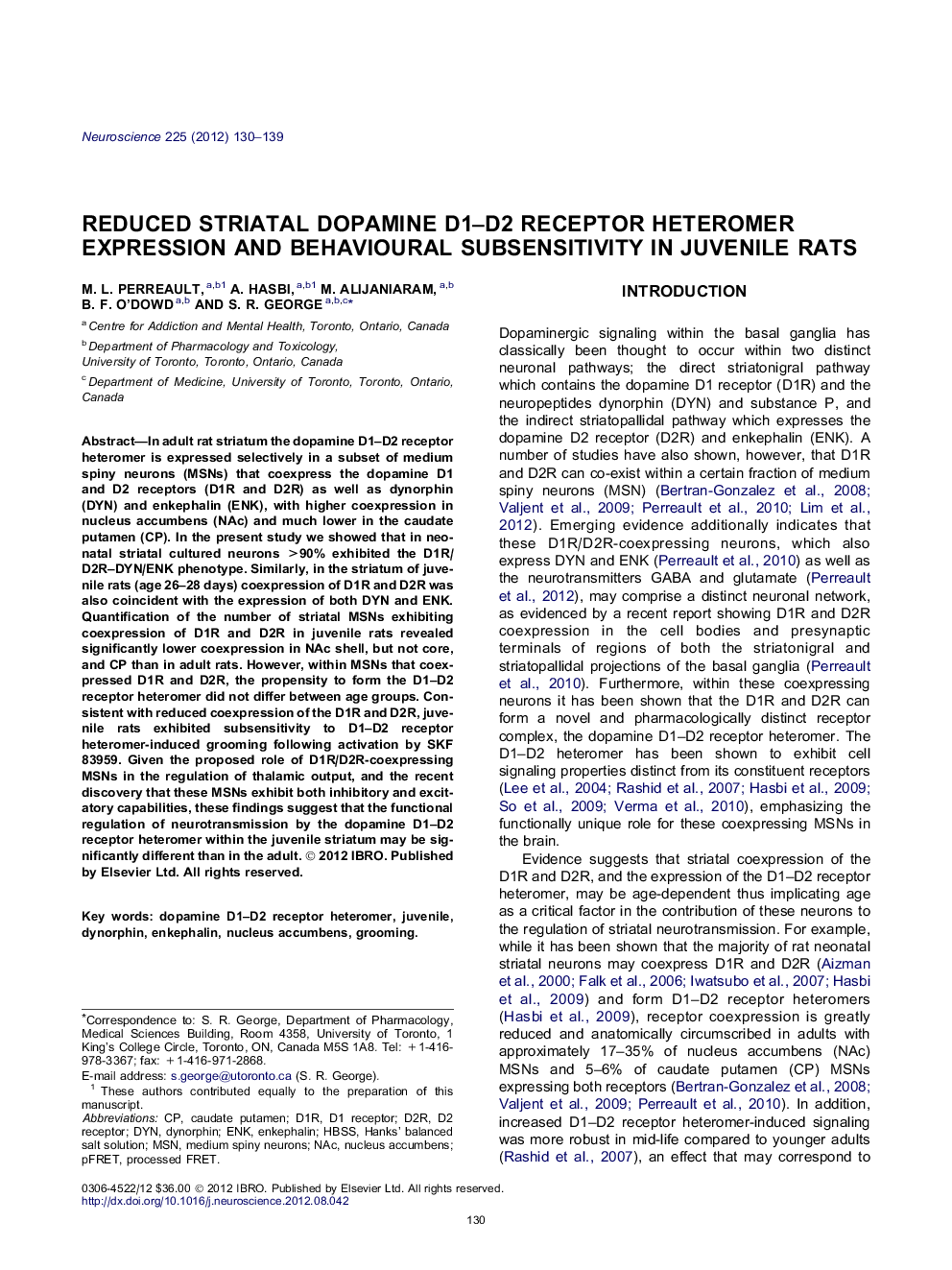| Article ID | Journal | Published Year | Pages | File Type |
|---|---|---|---|---|
| 4338244 | Neuroscience | 2012 | 10 Pages |
In adult rat striatum the dopamine D1–D2 receptor heteromer is expressed selectively in a subset of medium spiny neurons (MSNs) that coexpress the dopamine D1 and D2 receptors (D1R and D2R) as well as dynorphin (DYN) and enkephalin (ENK), with higher coexpression in nucleus accumbens (NAc) and much lower in the caudate putamen (CP). In the present study we showed that in neonatal striatal cultured neurons >90% exhibited the D1R/D2R–DYN/ENK phenotype. Similarly, in the striatum of juvenile rats (age 26–28 days) coexpression of D1R and D2R was also coincident with the expression of both DYN and ENK. Quantification of the number of striatal MSNs exhibiting coexpression of D1R and D2R in juvenile rats revealed significantly lower coexpression in NAc shell, but not core, and CP than in adult rats. However, within MSNs that coexpressed D1R and D2R, the propensity to form the D1–D2 receptor heteromer did not differ between age groups. Consistent with reduced coexpression of the D1R and D2R, juvenile rats exhibited subsensitivity to D1–D2 receptor heteromer-induced grooming following activation by SKF 83959. Given the proposed role of D1R/D2R-coexpressing MSNs in the regulation of thalamic output, and the recent discovery that these MSNs exhibit both inhibitory and excitatory capabilities, these findings suggest that the functional regulation of neurotransmission by the dopamine D1–D2 receptor heteromer within the juvenile striatum may be significantly different than in the adult.
► Dopamine D1 and D2 receptors are coexpressed with dynorphin and enkephalin. ► Striatal coexpression of D1 and D2 receptors is age-dependent. ► Juvenile rats have lower striatal D1–D2 receptor heteromer expression than adults. ► Juvenile rats are subsensitive to D1–D2 receptor heteromer-induced grooming.
